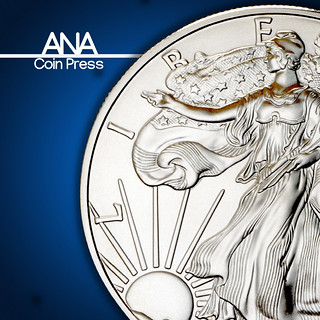
PREV ARTICLE
NEXT ARTICLE
FULL ISSUE
PREV FULL ISSUE
CIRCULATING AND NON-CIRCULATING LEGAL TENDERThe topic of legal tender is also addressed in the May 2021 ANA Coin Press blog by Mitch Sanders - this time, of course, from the U.S. perspective. It's nicely done and well illustrated. Here's an excerpt, but see the complete article online. -Editor
The first is that collecting a coin or banknote becomes possible only when it is removed from circulation, even though its legal tender status is a big part of what makes it collectible in the first place. The second paradox is the inverse of the first: sometimes, collectible numismatic items are legal tender, but are not actually intended for circulation. But, here as usual, paradoxes reveal interesting possibilities. And to understand those possibilities, it's important to understand the meaning of the term legal tender – a sometimes subtle concept. It turns out that when trying to understand what legal tender really means, the best approach is to focus on what it doesn't mean.
Legal tender status does not necessarily require acceptance. The Coinage Act of 1965 states that So, anyone who wants to make their mortgage payment with a sack of Sacagawea dollars, or pay their property taxes with a pallet of pennies, may – may – have some legal ground to stand on (along with some very significant practical difficulties). But ordinary exchanges involving goods and services – i.e., transactions where no debts are being repaid – are an altogether different story. In such situations merchants have the right to impose restrictions, for example, no bills larger than $20, or no pennies. Businesses may even be entirely cashless, though some localities do require businesses to accept cash (if not any particular form of cash). Legal tender status is not just a technical issue. The constitutional basis for paper money was considered, sometimes contentiously, in a series of Supreme Court cases decided from 1870 to 1884. These cases, known collectively as the Legal Tender Cases, were a response to the emergency issue of United States Notes, not backed by gold, during the Civil War. The Court initially held that the notes were unconstitutional, as they deprived creditors of property (i.e., gold) without due process. (Ironically, this argument was made by Chief Justice Salmon Chase, who had guided the notes' issue as Treasury Secretary.) But, after some membership changes, the Court ruled instead that the notes were justified as wartime emergency measure. Later, the Court decided that because the Constitution did not prohibit it, the federal government could issue paper money at any time.
To read the complete article, see:
Wayne Homren, Editor The Numismatic Bibliomania Society is a non-profit organization promoting numismatic literature. See our web site at coinbooks.org. To submit items for publication in The E-Sylum, write to the Editor at this address: whomren@gmail.com To subscribe go to: https://my.binhost.com/lists/listinfo/esylum All Rights Reserved. NBS Home Page Contact the NBS webmaster 
|

